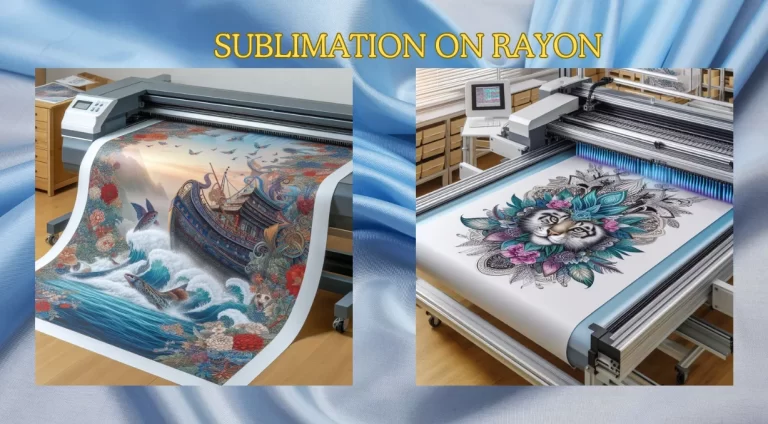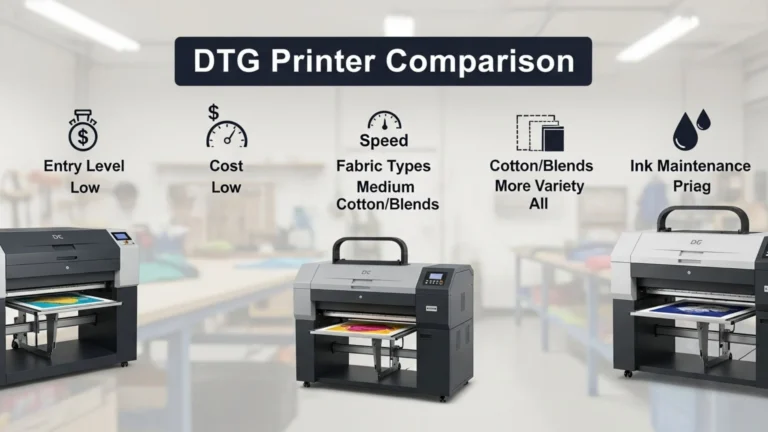What Is ICC Profile in Sublimation?
An ICC profile is a data file that controls how colors appear when printed. In sublimation, it ensures that the printed output matches the colors seen on your screen.
Why ICC Profiles Matter in Sublimation
Sublimation printing uses heat to transfer ink into a material, such as fabric or coated products. Color accuracy is critical. Without proper color management, prints may look dull, inaccurate, or off-tone.
Key Points:
- ICC stands for International Color Consortium.
- It standardizes color across devices, monitors, printers, and design software.
- Each printer, ink, and paper combination has a specific ICC profile.
How ICC Profiles Work
An ICC profile tells your printer how to interpret the colors in a design file. It maps color values (RGB or CMYK) to the closest reproducible values based on your specific setup.
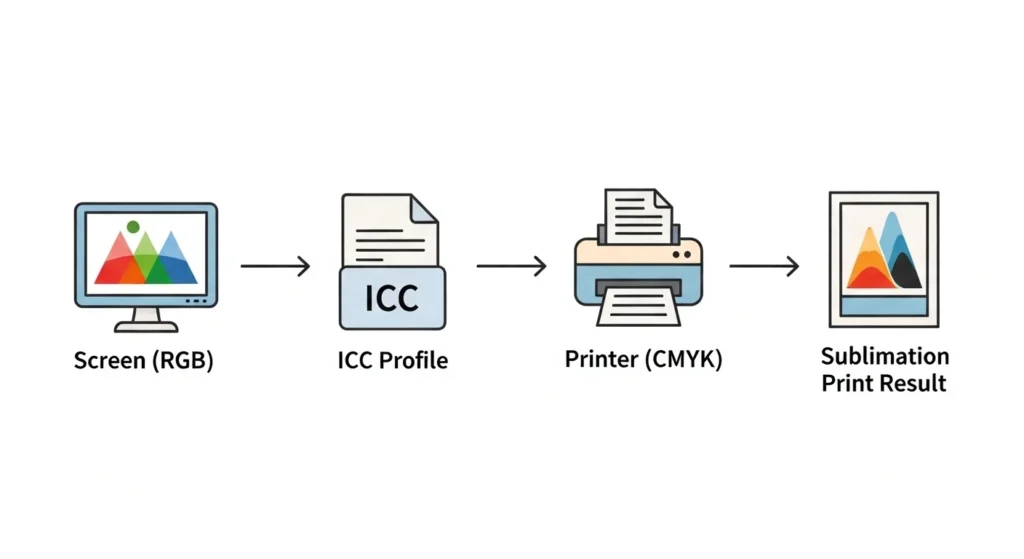
Input vs. Output:
| Type | Description |
|---|---|
| Input Profile | Describes device that captures color (camera, scanner). |
| Output Profile | Used by printer to reproduce correct colors. |
When to Use an ICC Profile in Sublimation
Use an ICC profile when:
- You’re using third-party sublimation ink.
- Your prints look different than your screen design.
- You want consistent color output across batches.
Not always needed:
- Some printer/ink brands come with built-in profiles.
- Default drivers may suffice for basic or internal use.
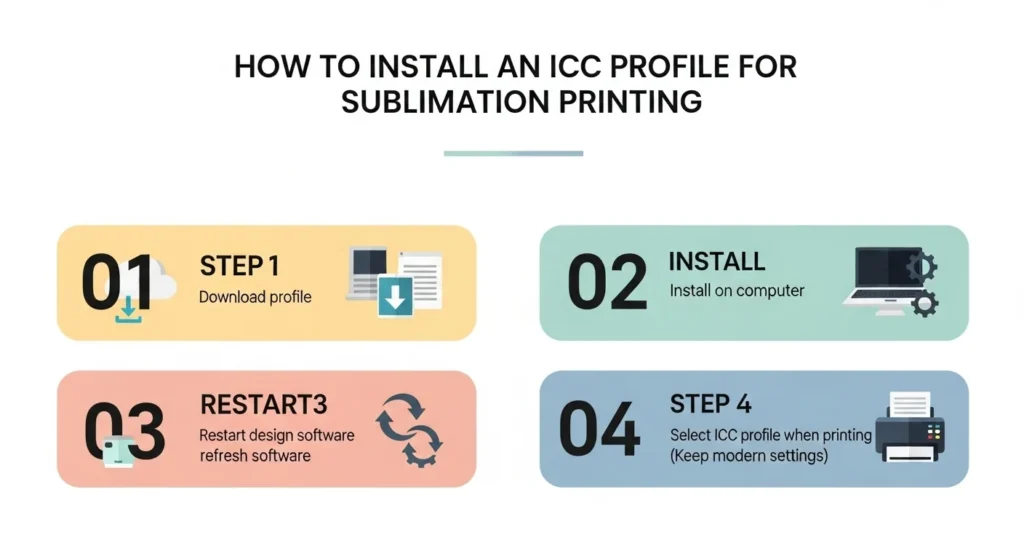
How to Install an ICC Profile
- Download the ICC profile from your ink or printer manufacturer.
- Install it on your computer:
- Windows: Right-click > Install Profile.
- Mac: Drag the file into
~/Library/ColorSync/Profiles/.
- Assign in Design Software:
- In Adobe Photoshop: Edit > Color Settings > Assign Profile.
- In CorelDRAW or Sawgrass Print Manager, choose your ICC profile in printer settings.
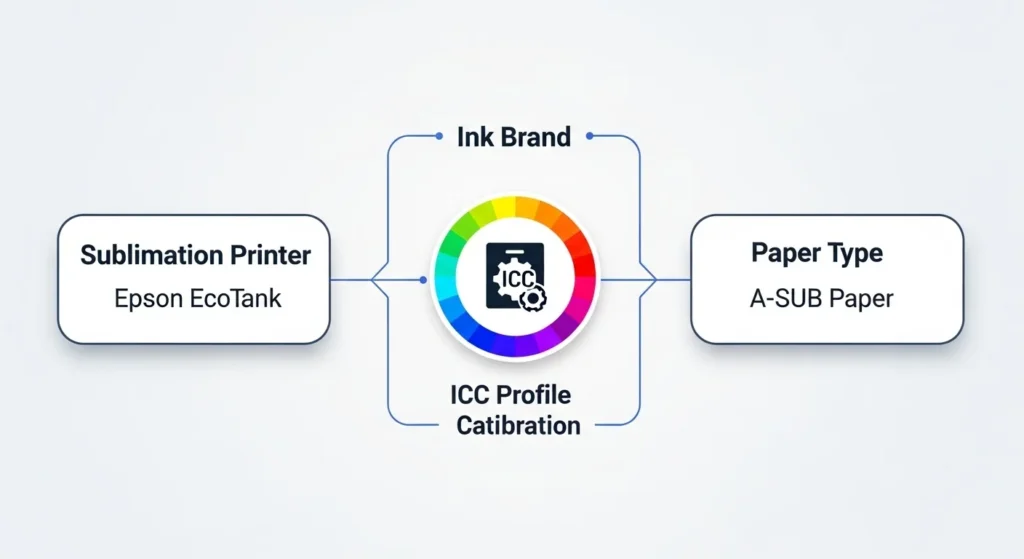
Factors That Affect ICC Performance
1. Ink Type
- Different sublimation inks absorb and react differently on substrates.
2. Paper Type
- Fast-dry vs. tacky paper will influence color saturation.
3. Printer Model
- Epson EcoTank models, for instance, vary in color interpretation.
4. Heat Press Settings
- Time, temperature, and pressure can all alter the final result.
Before and After Print Comparison
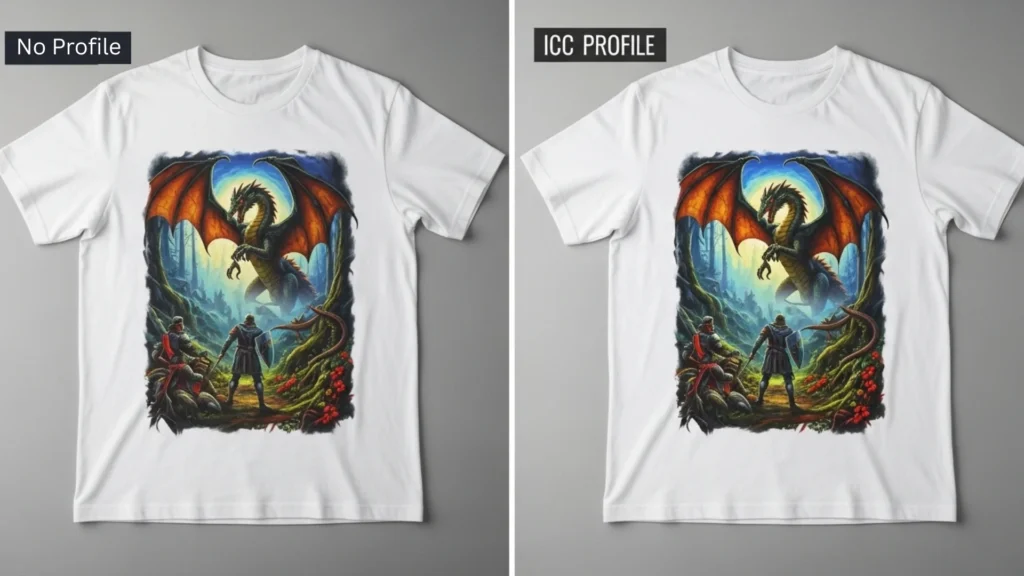
Common ICC Profile Issues
| Problem | Possible Cause | Solution |
|---|---|---|
| Colors too dark or muted | Wrong ICC profile | Match profile to your ink/printer setup |
| Prints don’t match screen | Monitor not calibrated | Use a color calibration tool like SpyderX |
| Profile doesn’t appear in app | Incorrect installation | Reinstall profile and restart the software |
| No change after profile applied | Driver settings override color settings | Turn off printer-managed color |
How to Test ICC Profiles
- Use a standard color chart (like Adobe RGB test images).
- Print it with and without the ICC profile.
- Compare results visually or with a spectrophotometer.
Tip:
Print several versions using different paper or heat settings to find the optimal match.
Where to Get ICC Profiles
- Ink manufacturers’ websites (e.g., Hiipoo, InkOwl, Cosmos).
- Printer support pages (e.g., Epson, Sawgrass).
- Online communities and forums (ensure it’s a trusted source).
- Custom profiling services (paid but precise).
Color Gamut Table or Chart
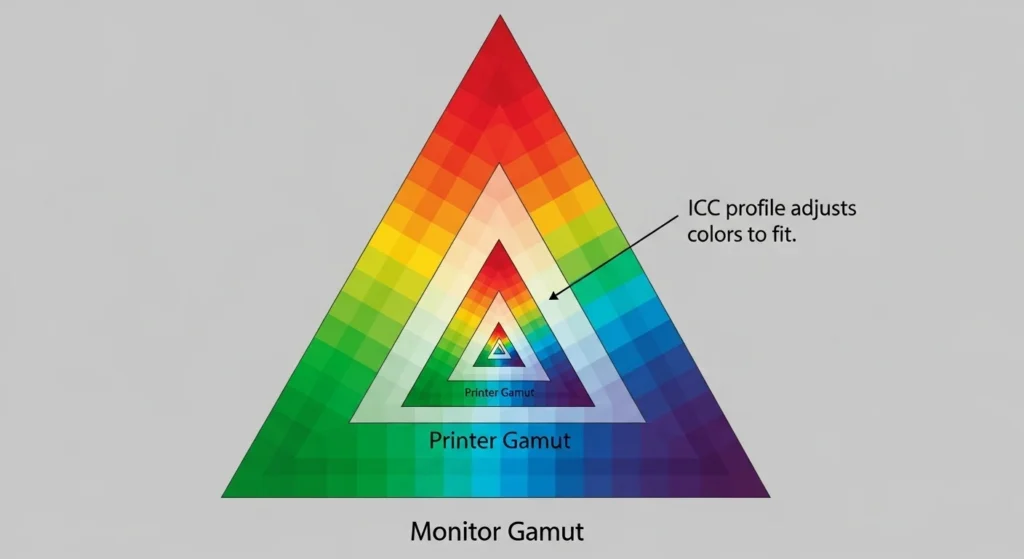
Should You Create a Custom ICC Profile?
If you:
- Use a non-standard combination of printer, ink, and paper.
- Need exact color matches (e.g., for logos or commercial clients).
Then a custom ICC profile might help. You’ll need:
- A calibration chart
- Spectrophotometer (hardware)
- ICC profiling software (e.g., i1Profiler)
Do All Sublimation Printers Support ICC Profiles?
Not always. Entry-level printers with locked ecosystems (like some Sawgrass models) use proprietary software instead.
Supported Printers:
| Printer Brand | ICC Profile Support | Notes |
|---|---|---|
| Epson | Yes | Especially EcoTank and WorkForce series |
| Sawgrass | Limited/No | Uses Print Manager with built-in profiles |
| Ricoh | Varies | Older models supported profiles manually |
🚀 Elevate Your Printing Game
Professional printing resources for stunning results


